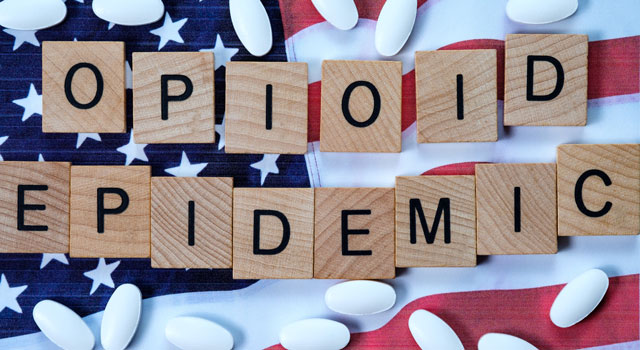Since the explosion of the Opioid Epidemic and last November’s announcement that it was a National Health Emergency, local, state, and nationwide lawmakers have been investigating and implementing plans to help cut down on the amount of opioid pills prescribed and overdose deaths.
Many states have even taken to legal matters and have begun writing up lawsuits aimed at major pharmaceutical companies, with the intent to get back some portion of the financial reparations they have lost as a result of the opioid epidemic. States such as California, Colorado, New York, Florida, West Virginia, Tennessee, New Mexico, and Arizona have all started to compile lawsuits aimed at multiple pharmaceutical companies, and even more counties within those states are filing their own.
On the home front, and in states such as Colorado, specifically, Senator Cory Gardner is taking even more steps to ensure the safety of his community. As of July of this year, Senator Gardner announced that Colorado would officially be working with the DEA to slow and monitor the amount of prescription medications that are coming into the state as a major effort to reduce the opioid crisis.
The Clearinghouse Act
As it now stands, there is no law enforcement agency or private party that has the capability to oversee a nationwide investigation of controlled medications that are prescribed to US citizens. As an effort to begin the process and find a good place to start, the DEA has created what they are calling, “The Clearinghouse Act of 2018”. Colorado is one of the first states that has officially signed up and promoted the act, as it seems, enough is enough.
“A few years ago, the DEA discovered a major drug company was shipping enough prescription opioid to the San Luis Valley for every man, woman, and child to have 30 to 60 pills per month” reports Gardner.
This bill was created to help bridge the gap between the pharmaceutical companies and the rest of the country, through the use of an automatic database that would monitor and notify the suppliers before an order could be filled.
The automated system would also be able to keep track of which doctors are prescribing what, how many, and to whom. This may seem like an invasion of privacy, but with the overwhelming numbers of opioid-related overdoses and literal billions spent on life-saving actions to save those who were overdosed, the database really doesn’t seem so bad.
Not to mention, the database would also help cut down on “doctor shopping” and unsafe prescribing practices by physicians and healthcare professionals.
The Opioid Death Toll
While the Centers for Disease Control and Prevention are still cumulating the data and collecting autopsy’s from 2017 (because there were so many and coroners have been slammed) they have released some preliminary data that shows the destruction that the opioid epidemic caused on the United States population in just one year.
According to the CDC, and with the data they have so far, the deaths from drug overdoses last year killed more people than guns, car crashes, HIV/AIDS have ever killed in a single year. The numbers also rise above the death toll than all US military casualties in the Vietnam and Iraq wars combined.
If the estimate holds, the number of deaths from drug overdoses would equal out to about twenty-nine 9/11’s in a year.
- The preliminary estimate is that over 72,000 people died from a drug overdose in 2017.
- In the year 2017, the state of Colorado saw over 1,000 drug overdose deaths, with more than half being related to opioids or heroin.
- According to preliminary federal data, nearly 200 people a day died of drug overdoses in the year 2017.
- A majority of these deaths were due to Fentanyl
- Two-thirds of these deaths were linked to opioids
The Heated Climate
There is a currently a lot of debate and push back in national government for just what types of control, change, and funding can go into stopping the opioid epidemic. For example, one major trend that has shown positive results around the rest of the world are safe injection sites.
The idea here is, people who are addicted are going to use and use until they can get the help they need. The safe injection sites at least give them the opportunity to use clean needles and have the ability to get resuscitated immediately if they fall out.
Trump’s Department of Justice, however, is threatening federal prosecution against any cities that would allow safe injection sites to be opened. Although it could save thousands of lives, the Justice Department is standing firm in, “It’s against the law”.
The government has come forward, however, with their recommendations of Medication Assisted Treatment programs, that allow opioid users a medication that inhibits cravings and blocks other opioids, despite the fact that these other drugs are also extremely addictive and can produce a high when abused.
The fact that states such as Colorado and Delaware are stepping forward to take precautionary and action-oriented measures to protect their own cities shows that this a job that the upstairs might not be willing to take on.
As America continues to lose thousands of lives every month to the opioid epidemic, the Clearinghouse Act has been introduced to Congress to be pushed through to Senate and eventually the President. Here’s hoping that more states will follow suit and join onto the Clearinghouse Act, if not to only to show the pharmaceutical companies that they mean business, but also to help get the massive amounts of opioid prescriptions under control.
Getting Help
If you or a loved one is addicted to drugs or alcohol and if you’ve tried but failed to kick the habit, you may need professional help. Addiction is tough to beat by itself due to the pain of withdrawal and a lack of support, but you can find both at Stout Street’s reputable treatment center. Call us today and begin your journey to sobriety.

